Hotels in Belize City, Belize |
Hotels in:
Reefs & Cayes
|
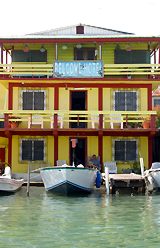
What to say about Belize City? Maybe the fact that it was never really intended to be a permanent settlement has to do with it’s evolution into... well... let’s just call it "unique" and leave it at that. "Funky with edges" might better describe it. Historians say that Belize City is built on a foundation of loose corals, logwood chips and rum bottles, not a solid beginning to say the least. Today, Belize City is the country's largest urban center with more than a third of the country's population, a city that overruns both sides of "Haulover Creek" (Haulover Creek is the name given to the last four miles of the Belize River) on the point of land which juts out into the Caribbean on the swampy plains built over the millennia by the river floods. 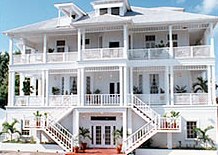
It was the de facto capital of the floundering British colony known as British Honduras from the 1860’s until approximately 100 years later when it was virtually destroyed by Hurricane Hattie (1961). A new capital called Belmopan was built inland about 50 miles (80 km) to the west at that time where all of the major governmental offices are now located. Nevertheless, Belize City remains the nation's commercial centre, it's largest city it remains the heart of the country. It’s own "heart" is the famous swing bridge over the Belize River, the only city in the world which still operates a manual swing bridge, swung daily. It is also home to the oldest Anglican Cathedral Church in Central America, St. John's Cathedral, which was built in 1812 from bricks brought as ballast from European sailing ships (finally a good foundation!!). Over the years, Government House (now the House of Culture Museum) was used as an administrative office and living quarters for the governors of Belize. This was built in early 1800 with a combination of Caribbean Vernacular and English Urban architecture. 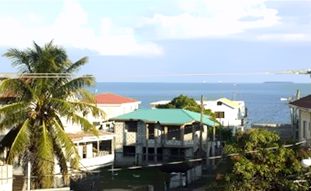
The Lighthouse monument at Fort George Point towers over the harbor entrance. This was built form money donated to the country by Belize's greatest benefactor - Baron Bliss, the 5th baron of Portugal. At his request, he was entombed in front of the lighthouse which he designed himself prior to his death. City tours are available through the hotels offering in-depth history of the city. Other sites worthy of a visit include the Belize Museum, the old Yarborough Cemetery, the Maritime Museum and the Belize Tourism Village (for those who would like to briefly sneak back into the 21st century). 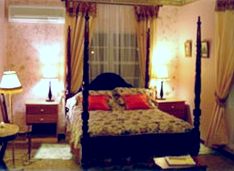
The Museum, built as a colonial prison in the mid 1800s, is a two-story brick building on Gabourel Lane with a permanent exhibit of ancient Maya pottery as well as displays on the history of Belize City and Belize's rich Maya history. Although, the old Yarborough Cemetery saw its most recent burial in 1891, Belize's first public cemetery still serves as a valuable resource for researchers and curiosity seekers alike looking for a glimpse into the Belizean past. The Maritime Museum, located on the Belize River just next to the Swing Bridge introduces visitors to a history of Belize's fishing and boat building industries. Lastly, the Belize Tourism Village is located on the Belize River mouth, about 15 minutes away from cruise ship anchorage. Specifically designed to cater to cruise lines, the Village has courtyards and terminals offering bathroom facilities, restaurants, snack bars, entertainment (on cruise ship days), access to land and marine tours as well as a variety of local souvenirs, jewelry and clothing. All in all, no one who has ever visited Belize City can say they’ve seen anything like it before. It is at once charming and challenging, delicate and dangerous... and regardless of individual points of view, one thing is certain: no visit to Belize would be complete without it. 
|
 Tropical Travel Association
|

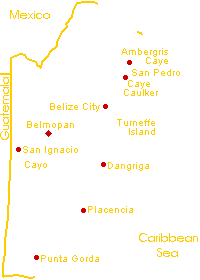
and Guatemala!
Tikal, Flores & the Peten
...explore Tikal and the Mayan homeland.
Antigua, Guatemala
...Central America's most magnificent city.
Lake Atitlan
...the most beautiful lake in the world!.
Monterrico
...Guatemala's best beach.
Guatemala City
...where business is done.
Buses and vans
...getting there is half the fun!
Tropical Travel Association
...unique destinations for independent travelers.












